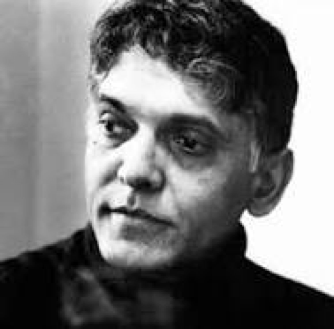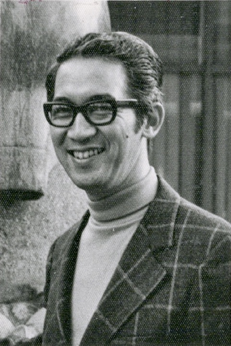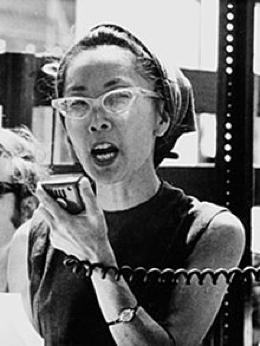So many aspects of life have been developed through the years that came. From cultures, to technology and to many industries that continue to innovate themselves day to day. One thing still seems to be beating the air when it comes to the subject of how “times have changed.” That’s racism.
Racism is still a dangerous risk to so many minorities alike; African-Americans, Muslims and many more. Among those victims are Asians and Asian-Americans. For us minorities, we know the suffering of each other’s mere existence.
How different we’re all looked at, how differently we’re treated and the stereotypes that make a stamp and cloud what kind of person we really are. I remember reading a post on a social media app that urged me to detail these important and key individuals, mostly specifically Asian-American civil rights activists who assisted minorities beyond their scope, because they knew and experienced the struggles of what it was like to be a minority.
To those who simply don’t know the history and to the person who said that minorities have never united with other minorities to rise against white supremacy and racism; this is for you.
Eqbal Ahmad
Born in Gaya, Bihar, British India in 1933. Eqbal Ahmad was a Pakistani political scientist and writer well known for his support for resistance movements and anti-war activism. He migrated to Pakistan as a child from his birth place where he soon attended and graduated Forman Christian College in Lahore. Thereafter, he served as an Army officer and was injured during the First Kashmir War which indicted his honorable discharge.
Shortly after, he earned a PhD from Princeton University in California which is where he began to voice his support for Palestinian rights and became a prominent member of the anti-war Institute for Policy Studies during his teaching career at Cornell and University of Illinois in 1968.
Due to his opposing views at the universities he continued working as a fellow at University of Chicago from 1968-1972 and became a strong activist against the Vietnam War. During his time as a political scientist he had many predictions, one which predicted Iraq’s fall into sectarian violence and chaos after Saddam Hussein was sentenced to hanging.
He also interviewed Osama Bin Laden in Peshawar in 1986 where he predicted his defiance against US and Pakistan after forming Al-Qaeda. During his proactivity at the Institute for Policy Studies, he eventually became a Senior Fellow while also serving as the first director of the Transnational Institute of Amsterdam. His legacy continued after his death May 11, 1999 when a public group was founded under his honor named, “Eqbal Ahmad Centre of Public Education”.

Edison Uno
Born in Los Angeles, California in 1929. Edison Uno was a Japanese-American civil rights advocate who graduated from Los Angeles State College with a political science degree and became the “Father” of the redress movement for his endless defiance against the internment government order.
It’s said he was the last to leave his internment camp, vacating that space for over 1,500 days. He later taught at San Francisco University where he helped create the country’s first Ethic Studies program and established the “Edison T Uno. Public Service Award”.
He co-chaired with Ray Okamura for the repeal of Title II of Internal Security Act of 1950 which averted the revival of internment camps and prevents the government from abusing the power of the act towards civil rights activists, black power and antiwar protests. He joined the JACL in 1948 but by 1950, became the youngest chapter president.
His legacy continued after his death in 1976 where his Japanese Redress Movement enacted the government to give a formal, national apology along with a $20,000 to all detainees who were held in internment camps wrongfully.

Helen Zia
Born in Newark, NJ in 1952. Helen Zia was a Chinese-American journalist who voiced opposition to the Vietnam War and activist for Asian American and LGBTQ rights. She was part of the first graduating class of women from Princeton University, Woodrow Wilson School of Public and International Affairs in the early 1970s.
She was also among the founders of Asian American Students Association. She soon discovered her life’s work as journalist and writer after working as a construction labor and quitting medical school. She used her journalist and writing powers for great causes;
- Ignited a response from Asian Americans who demanded justice after the murder of Vincent Chin in 1982
- Spoke on issues regarding civil rights, peace to women’s rights, and countering hate violence/crimes involving homophobia.
- Testified before US Commission of Civil Rights for racial impact on the media.
With her presence and received an honorary Doctor of Laws degree from the Law School of the City University of NY for bringing recognition to important racial impact and news.
Once same-sex marriages were legalized, her and Lia Shigemura married which made them one of the first same-sex couples to legally marry in California.
- Several published works;
- January 2000; Asian American Dreams; The Emergence of an American People, Co-authored w/Wen Ho Lee, January 2002; My Country Versus Me

Larry Itliong
Born in San Nicolas, Pangasinan, Philippines in 1913. Larry Itliong was a Filipino-American labor organizer who, at the time, worked in Alaska, Washington, Montana, and South Dakota organizing cannery and agricultural unions where he helped found the Alaska Cannery Workers Union (later became Local 7 of the International Longshoreman’s and Warehouse Workers Union (ILWWU). When WWII had occurred, he was drafted and served the US Army as a messman. His lengthy affiliations continued after his service;
- 1953; Vice-president of the ILWWU Local 37 in Seattle
- 1954 to 1957; Secretary of the Filipino Community, founded the Filipino Farmers Worker Union, and was elected president of the Filipino Voters League, in Stockton
- 1965; Lead the AFL-CIO union Agricultural Workers Organizing Committee
- This committee voted a strike against the Delano Grape Growers where Cesar Chavez’s National Farm Workers Association had become largely involved with
- 1966; During President Lyndon B. Johnson War on Poverty; California Rural Legal Assistance was founded among; Cesar Chavez, Dolores Huerta, Larry Itliong
After leaving the United Farm workers for difficult merger reasons, he became a delegate in the 1972 Democratic National Convention and served as the President of the Filipino American Political Association. After his death he and his co-activist Philip Vera Cruz were honored by several arts and murals in LA’s Filipinotown and CSU Dominguez Hills.
Mid-April 2013, Alvarado Middle School had even renamed Itliong-Vera Cruz Middle School which became the first school in the US to be named after Filipino-Americans. In 2014, the Filipino American Highway was designated as Itliong-Vera Cruz Memorial Bridge.

Yuri Kochiyama
Born in San Pedro, California in 1921. Yuri Kochiyama was a Japanese-American civil rights activist that was involved in several movements including; black power, anti-war movement, political prisoner oppositions and reparations for Japanese-American internees.
She graduated from Compton Junior College on 1941 where she studied English, journalism, and art. Her journey flourished her activism campaign;
- in 1942 to 1946 She and her mom moved through internment camps from Santa Anita Assembly Center to War Relocation Center at Jerome, Arkansas.
- Joined CORE (Congress of Racial Equality) in 1960 shortly after moving to Harlem with her husband, Bill Kochiyama and their six children
- Met Malcom X in 1963 during a protest and joined his pan-Africanist Organization of Afro-American Unity
- Witnessed his assassination where a famous photo from LIFE was captured of Yuri holding him in her hands
- Also had a close relationship with Robert F Williams
- Her and her husband advocated for the Civil Liberties Act of 1988
- Mid 1960s; Joined the Revolutionary Action Movement, a black nationalist organization
- 1977; Joined a group of Puerto Ricans in order to draw attention to Puerto Rican independence; occupied the statue for nine hours before surrendering to police
Throughout her campaigns, she continued to support those she saw as political prisoners and those being oppressed by the FBI. While her views maybe controversial and often solitary, she remained on the most respected and well known activists in her time and beyond her death on June 1, 2014 with multiple documentaries covering her life story.

